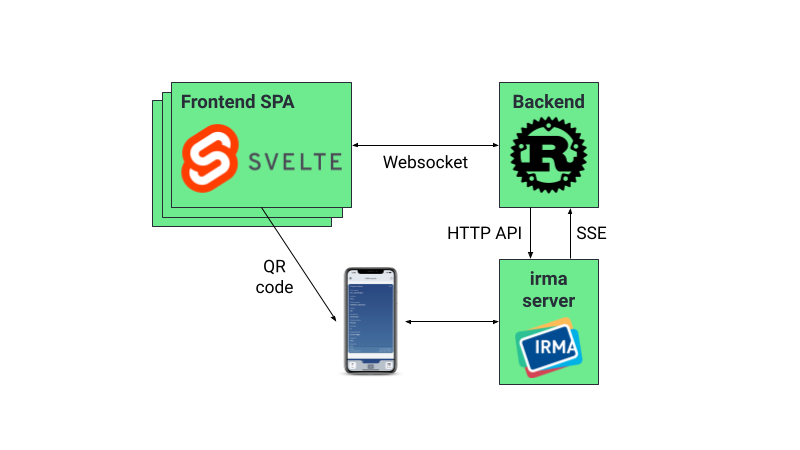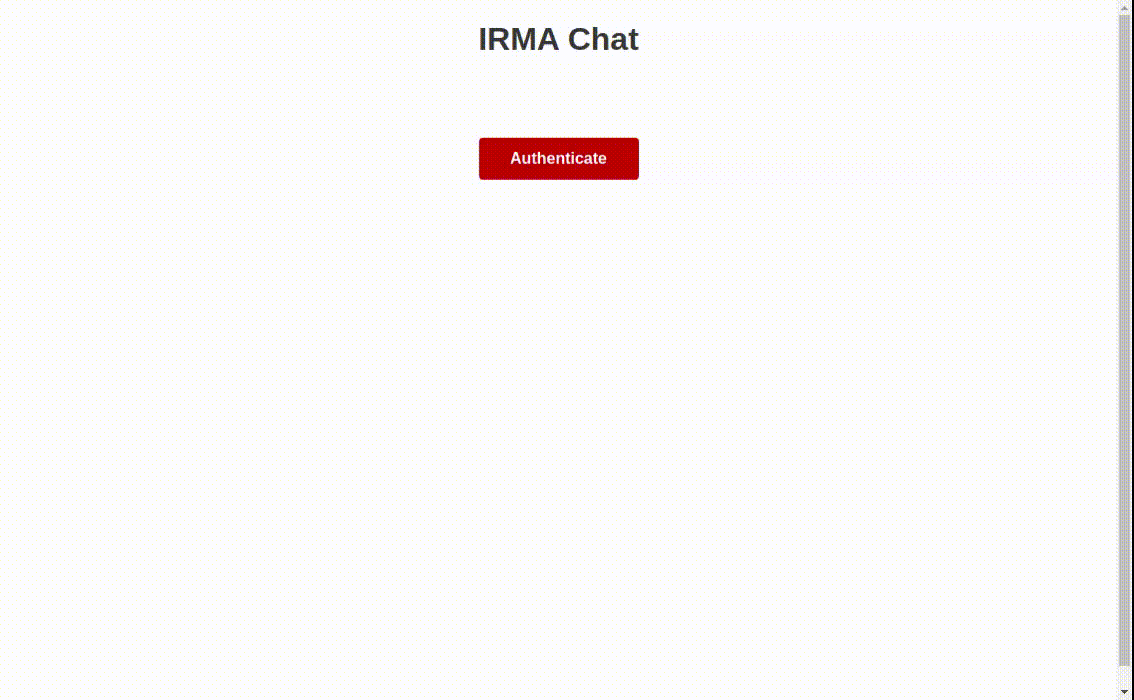Learning Rust, Svelte, and IRMA building a chat application with strong authentication

My time being scarce, the best approach is to try and kill two birds with one stone, or actually in this case, three:
- Rust, the open-source language that strives for the trifecta of safety, speed, and concurrency
- Svelte, an alternative to React, providing performance and a tiny bundle size
- IRMA, the privacy-friendly identity platform
I had some experience with all three before I started. The challenge now was to get to the level that I'm comfortable using them.
The benefit of defining your personal project is that you don't need to worry about "annoying" constraints like what is most productive or maintainable solution, or having to adhere to the client's wishes.
Know who your peers are
As the use case I chose a chat application that has substantiated guarantees of knowing who you are chatting with as its special feature. That entails using IRMA for authentication and providing your real name.
In general, it's good to have anonymity when cruising the internet, but in specific cases, like when there is official business involved, it is important to know who you are talking to. For instance, when dealing with your local government or when you register for some kind of insurance. That's where an identity platform like IRMA finds its application. Apart from strong authentication, it enables you to control your personal data and only selectively disclose it.
Technical overview
The application consists of these components:
- A frontend SPA, written in Typescript / Svelte that guides the user through the authentication flow and shows the chat interface. The complete application bundle size is just 26.4 kb and that includes a QR library necessary for the IRMA authentication flow. In contrast, react-dom is 103.7 kb by itself
- A backend application written in Rust that only communicates over websockets. There are two websocket endpoints, one for the authentication flow with IRMA and one to send and receive chat messages
An IRMA server to perform IRMA sessions

Session status updates are sent from IRMA server to the Rust backend over Server Sent Events and are forwarded to the client via the established websocket. Using websockets reduces the latency to a minimum and makes polling for status updates or new messages unnecessary.
Further details and code can be found on our Github.
Demo
You can try the demo at https://irma-chat.tweede.golf/ - make sure to have your IRMA app installed and configured.

Retrospective
Rounding up, I'm happy to have taken the time for this learning experience, as getting your hands dirty is the only way to truly understand the pros and cons of any technology. This will allow me to make the right tech choices further down the road.
Looking forward to the next one :)